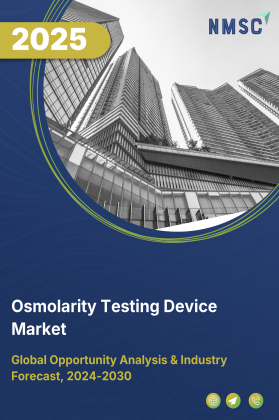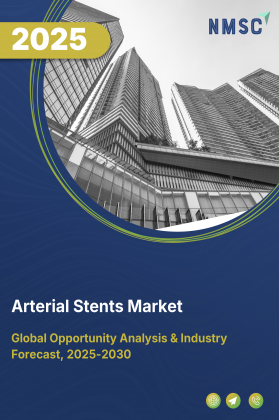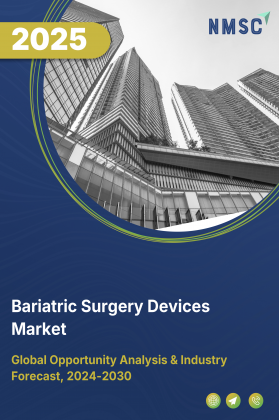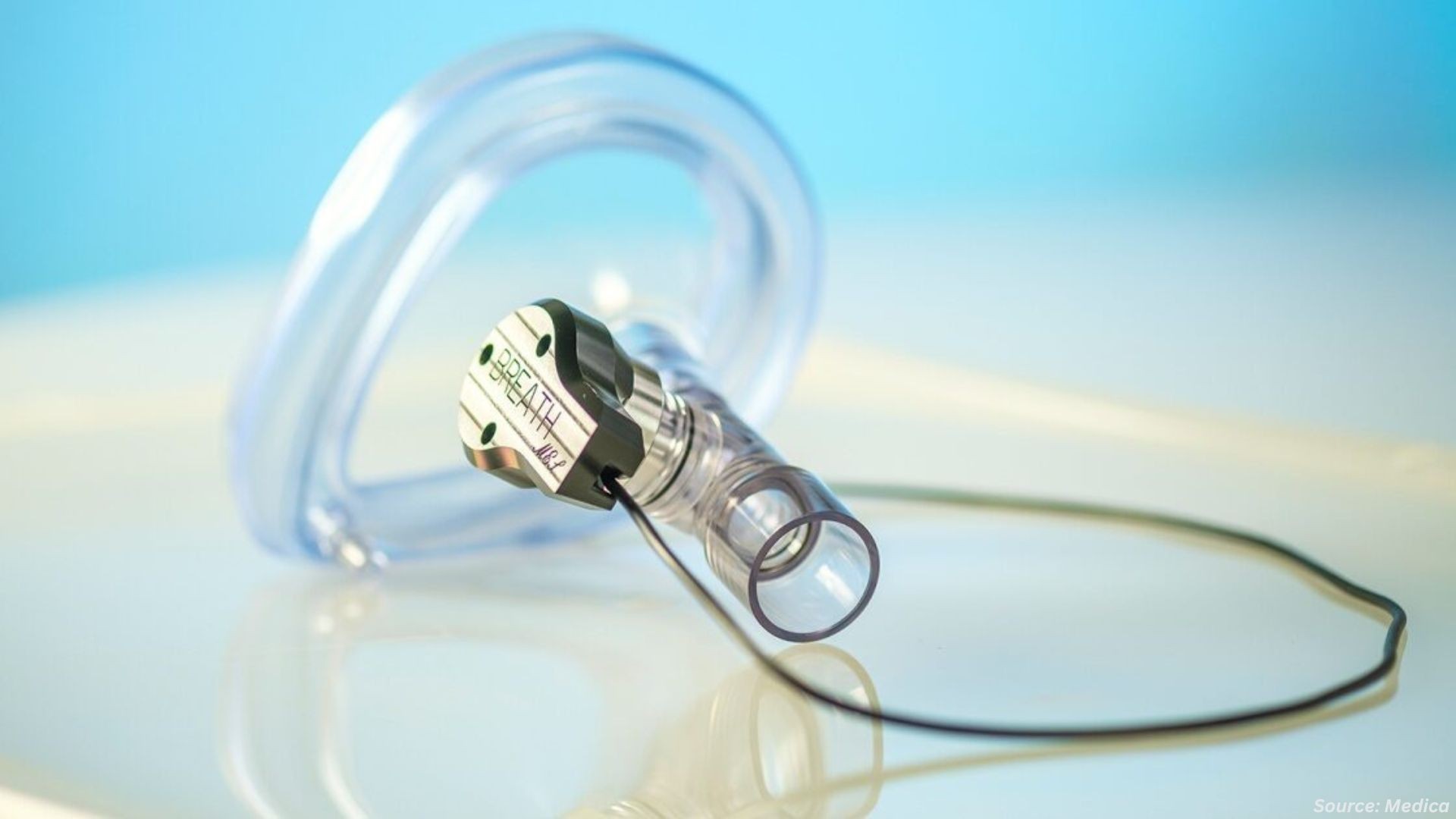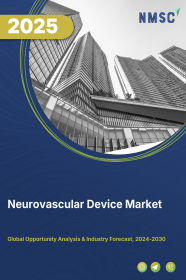
Neurovascular Device Market by Product (Embolization Devices, Revascularization Devices, Thrombectomy Devices, Embolic Protection Devices, Accessory Devices, and Others), by Process (Neurothrombectomy, Cerebral Angiography, Carotid Endarterectomy, Stenting, Microsurgical Clipping, Coiling, and Flow Diversion), by Device (Cerebral Embolization and Aneurysm Coiling Devices), and Others - Global Opportunity Analysis and Industry Forecast 2024-2030
Market Definition:
The Neurovascular Device Market size was valued at USD 3.35 billion in 2023 and is predicted to reach USD 5.71 billion by 2030 with a CAGR of 7.90% from 2024-2030.
Neurovascular or cerebrovascular disease refers to all disorders in which an area of the brain is temporarily or permanently affected by bleeding or restricted blood flow. Neurovascular devices are devices that are widely used in the treatment and diagnosis of various types of neurovascular diseases including peripheral & central nervous system disorders. These devices include coils, stents, thrombectomy devices and others. The devices are also used to treat neurological disorders such as epilepsy, neuromuscular disorders and cerebral aneurysms among others. The clinician performs neurovascular assessment by using neurovascular devices when there is suspicion of compromised blood flow or nerve damage that can lead to permanent injury.
Market Dynamics and Trends:
Rapid increase in the prevalence of neurovascular diseases such as ischemic stroke, cerebral aneurysms and carotid atherosclerosis due to sedentary lifestyle and upsurge in unhealthy living conditions is driving the growth of neurovascular device market. Also, surge in technological innovations such as AI that leads to advancements in diagnostics, imaging and mobile computing provides consistent, accurate and quick delivery results, boosts the neurovascular device market. Moreover, various developments in neurovascular devices in terms of technology, efficacy, accuracy and reduction of risk for invasive surgeries is further expected to drive the growth of neurovascular device market during the forecast period.
However, high cost of neurovascular devices and lack of qualified neurosurgeons to handle the neurovascular devices are factors that are expected to restrain the growth of market during the forecast period. On the contrary, increase in ongoing research & development activities in healthcare sector and development of advanced technologies such as laser and 3D imaging generation that helps to increase efficiency & improves workflows in neurointerventions are expected to create ample growth opportunities for the market in the coming years.
Market Segmentations and Scope of the Study:
The neurovascular device market share is segmented on the basis of product, process, device, application, end user and geography. On the basis of product, the market is divided into embolization devices, revascularization devices, thrombectomy devices, embolic protection devices, and accessory devices. Embolization device segment is further sub divided into clippings, embolic coils, coil assist stent, and coil assist balloon. Revascularization device segment is sub classified into carotid artery stents and flow diversion stents. Thrombectomy device segment is sub categorized into clot retrieval devices, suction & aspiration devices, and snares. Embolic protection device segment is sub segmented into distal filter devices and balloon occlusion devices. Accessory device is sub divided into microcatheters and micro-guidewires.
On the basis of process, the market is categorized into neurothrombectomy, cerebral angiography, carotid endarterectomy, stenting, microsurgical clipping, coiling, and flow diversion. On the basis of device, the market is classified into cerebral embolization and aneurysm coiling devices. On the basis of application, the market is bifurcated into cerebral aneurysm, arteriovenous malformation (avm), ischemic stroke, carotid artery stenosis, and others. On the basis of end user, the market is segmented into hospitals, ambulatory surgical centers, and clinics. Geographic breakdown and analysis of each of the aforesaid segments includes regions comprising of North America, Europe, Asia-Pacific, and RoW.
Geographical Analysis:
North America holds the lion share of neurovascular device market at present and is expected to continue its dominance during the forecast period. This is attributed to factors such as rising prevalence of neurological diseases such as alzheimer's disease, epilepsy & seizures and acute spinal cord injury along with rising awareness associated with early neurological disease diagnosis and treatment in this region. According to Alzheimer’s Association, about 6.2 million people in the United States suffered from Alzheimer’s disease in 2021. Of the total U.S. population, more than 1 in 9 people (11.3%) of age 65 and older has Alzheimer’s. Also, presence of major key players such as Stryker Corporation, Johnson & Johnson, Medtronic PLC and Penumbra Inc. that are launching new products and expanding their business boosts the market growth in this region. For instance, in February 2021, Medtronics announced expansion of its new radial artery access portfolio that includes the Rist 079 Radial Access Guide Catheter and Rist Radial Access Selective Catheter. Rist 079 Radial Access Guide Catheter is the first catheter that has been specifically designed for neurointerventions using the radial artery pathway in the wrist that optimizes transition zones for the required navigability.
On the other hand, Asia-Pacific is expected to show a steady rise in the neurovascular device market due to the large patient population and presence of elderly population that leads to highly prone chronic diseases such as neurological and cardiovascular disorders in this region. For instance, according to the Global Burden of Disease Study in 2019, about 64.4 million in South-East Asia and 85.0 million in Western pacific regions are living with neurological diseases. Moreover, increasing government healthcare expenditure for improving healthcare infrastructure in this region is expected to drive the neurovascular devices market growth. For instance, the Central and state government of India announced the budget of 2021-22 to invest Rs 4.72 lakh crore for healthcare infrastructural development in the country.
Competitive Landscape:
Various market players operating in the neurovascular device market includes Medtronic Plc, Stryker Corporation, Penumbra Inc., Johnson & Johnson, Terumo Corporation, Merit Medical Systems, Inc., Penumbra, Inc., Integer Holdings Corporation, MicroPort Scientific Corporation and Imperative Care. These market players are adopting various collaborations and launch of new products across various regions to maintain their dominance in the IoT in healthcare market.
For instance, in April 2021, Perflow Medical announced expansion of product portfolio with first clinical use of the Stream 17 Dynamic Neuro-Thrombectomy Net. This device is designed for tortuous anatomy to effectively treat hemorrhagic and ischemic stroke patients. Moreover, in January 2021, Penumbra announced collaboration with Genesis Medtech to expand neurovascular market in China. This collaboration positioned Genesis MedTech as the largest local company in China’s neurovascular space.
Key Benefits
-
The neurovascular device market report provides the quantitative analysis of the current market and estimations from 2022 to 2030. This analysis assists in identifying the prevailing market opportunities to capitalize on.
-
The study comprises of a detailed analysis of the neurovascular device market trends including the current and future trends for depicting the prevalent investment pockets in the market.
-
The information related to key drivers, restraints, and opportunities and their impact on the neurovascular device market is provided in the report.
-
The competitive analysis of the market players along with their market share in the neurovascular device market is mentioned.
-
The SWOT analysis and Porter’s Five Forces model are elaborated in the study.
-
The value chain analysis in the market study provides a clear picture of the stakeholders’ roles.
Key Market Segments
By Product
-
Embolization Devices
-
Clippings
-
Embolic Coils
-
Coil Assist Stent
-
Coil Assist Balloon
-
-
Revascularization Devices
-
Carotid Artery Stents
-
Flow Diversion Stents
-
-
Thrombectomy Devices
-
Clot Retrieval Devices
-
Suction & Aspiration Devices
-
Snares
-
-
Embolic Protection Devices
-
Distal Filter Devices
-
Balloon Occlusion Devices
-
-
Accessory Devices
-
Microcatheters
-
Micro-Guidewires
-
By Process
-
Neurothrombectomy
-
Cerebral Angiography
-
Carotid Endarterectomy
-
Stenting
-
Microsurgical Clipping
-
Coiling
-
Flow Diversion
By Device
-
Cerebral Embolization
-
Aneurysm Coiling Devices
By Application
-
Cerebral Aneurysm
-
Arteriovenous Malformation (AVM)
-
Ischemic Stroke
-
Carotid Artery Stenosis
-
Others
By End User
-
Hospitals
-
Ambulatory Surgical Centers
-
Clinics
By Geography
-
North America
-
U.S
-
Canada
-
Mexico
-
-
Europe
-
Germany
-
France
-
Italy
-
Spain
-
United Kingdom
-
Russia
-
Sweden
-
Rest of Europe
-
-
Asia-Pacific
-
Australia
-
China
-
India
-
Japan
-
South Korea
-
Indonesia
-
Singapore
-
Rest of Asia-Pacific
-
-
RoW
-
UAE
-
Brazil
-
South Africa
-
Israel
-
KSA (Kingdom of Saudi Arabia)
-
Turkey
-
Remaining Countries
-
Key Players
-
Medtronic Plc
-
Stryker Corporation
-
Penumbra Inc.
-
Johnson & Johnson
-
Terumo Corporation
-
Merit Medical Systems Inc.
- Penumbra, Inc.
-
Integer Holdings Corporation
-
MicroPort Scientific Corporation
-
Imperative Care




















 Speak to Our Analyst
Speak to Our Analyst



